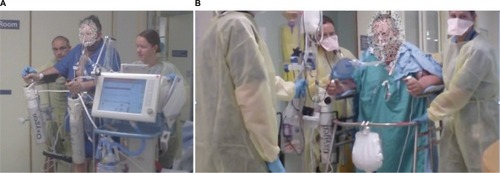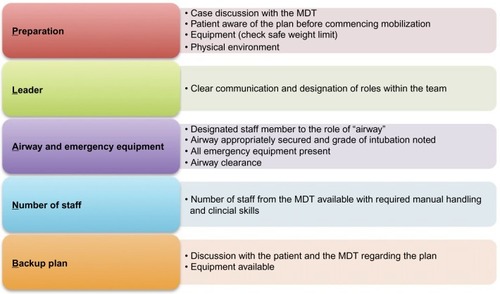Figures & data
Figure 1 Mobilization flowchart.
Notes: (A) Decision making flowchart for mobilization of ICU patients. *If hemiplegic, ≥ 3/5 on intact side. (B) Nursing guideline for mobilization of ICU patients.
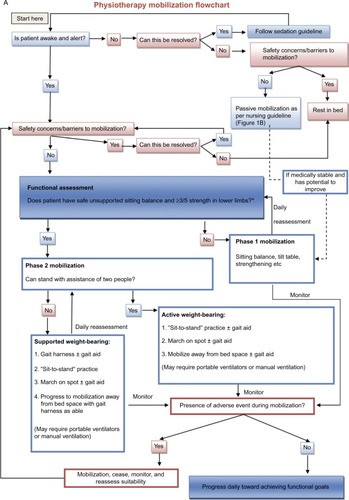
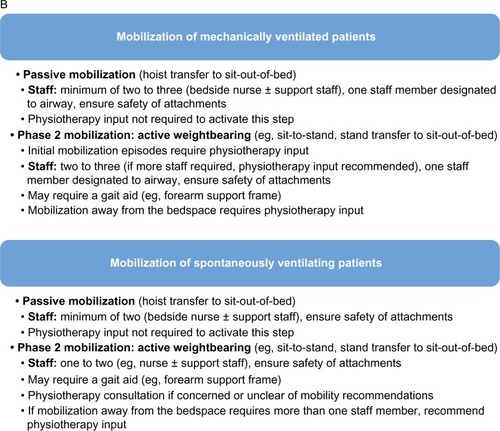
Figure 2 Passive mobilization.
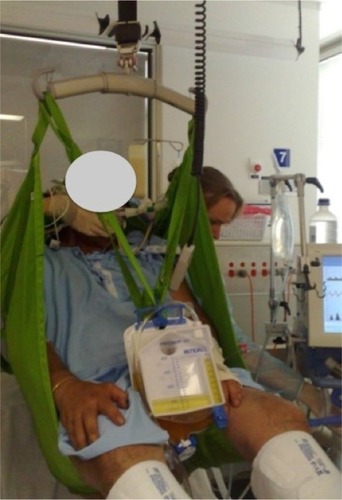
Figure 3 Phase 1 mobilization.
Notes: (A) Tilt table for an awake intubated patient performing squats with assistance. This patient was unable to achieve supported weight-bearing with a gait harness. Note the nurse managing airway and physiotherapists providing support to knees. (B) Sitting balance with a ventilator-dependent patient. Note the nurse providing airway support while physiotherapists assist balance behind and in front of the patient.
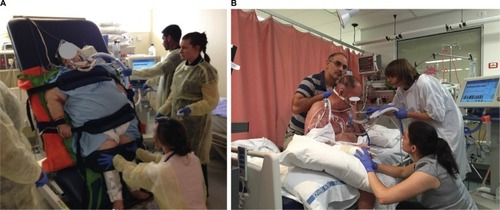
Figure 4 Phase 2 mobilization: supported weight-bearing for an intubated patient with primary central nervous system pathology.
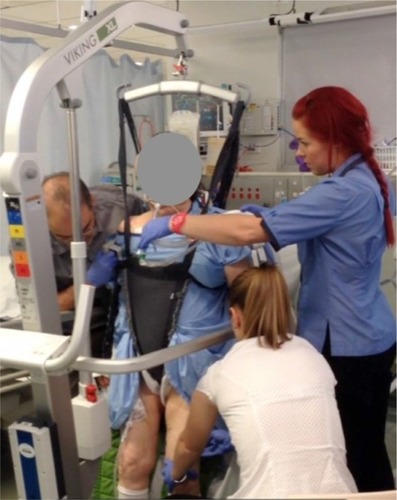
Figure 5 Phase 2 mobilization: active mobilization of awake intubated patients.
Notes: (A) With a ventilator and portable monitoring. Note the spare oxygen cylinders suspended from the forearm support frame. Support staff are following the patient with a chair. (B) With resuscitator bag. Note the bariatric forearm support frame and organization of attachments on the portable pole. Both the physiotherapist and nurse are assisting the patient to steer the frame.
